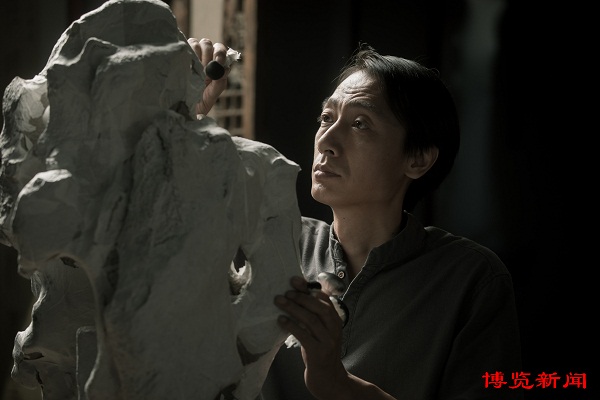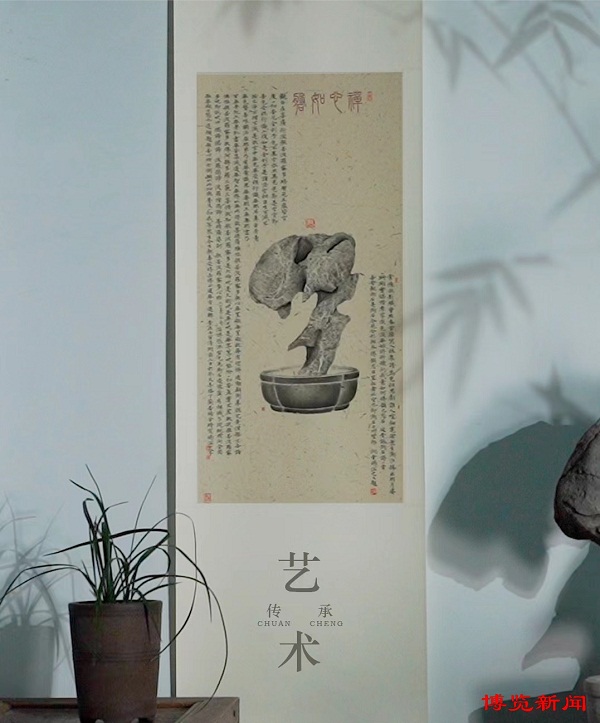
Artist Zhang Honglei from Zibo city – located in East China's Shandong province – attracted a great deal of admiration and attention for his artworks on show at the 9th Chinese Exposition of Museums and Relevant Products and Technologies.
The event was held on Sept 1 in Zhengzhou city – in Central China's Henan province – and he drew praise for his vivid full-frame rubbings.

Zhang Honglei is an esteemed inheritor of full-frame rubbings, a craft which is registered as an intangible cultural heritage item in Zibo. [Photo/zbnews.net]
To promote the traditional techniques for making full-frame rubbings, Zhang has been to numerous exhibitions. His works are widely said to be appreciated by experts and many museums have invited him to make rubbings for their collections.
Full-frame rubbings, also known as three-dimensional rubbings are visually very powerful. The technique restores the three-dimensional shapes of objects – such as bronze ware – onto flat paper by using ink and rice paper, supplemented by sketching, painting, paper-cutting and other painstaking methods.
The technique of making full-frame rubbings is considered to be the highest level in the art of rubbings. It has a history of more than 200 years and plays an irreplaceable role in the protection of cultural relics, archaeology and ancient books.
Zhang was engaged in mural paintings and sculptures in his early years. He became obsessed with learning the techniques for making full-frame rubbings after seeing stone rubbings at his workplace.
With the help of a three-dimensional perspective method, he created a new art form to make the full-frame rubbings more accurate and vivid. His works, especially the full-frame rubbings of the stones, present the intricate details of the objects in a remarkable way.

A full-frame rubbing work in the Zibo Honglei Rubbing Art Museum, which is run by Zhang Honglei and shows the origins and values of the arts. [Photo/zbnews.net]
To top it off, Zhang invites famous calligraphers and painters to improve his works by adding paintings and poems. He has also designed over 10 kinds of cultural and creative products.
Zhang has organized training courses to train professionals in the field for a long time so that the techniques can be inherited.